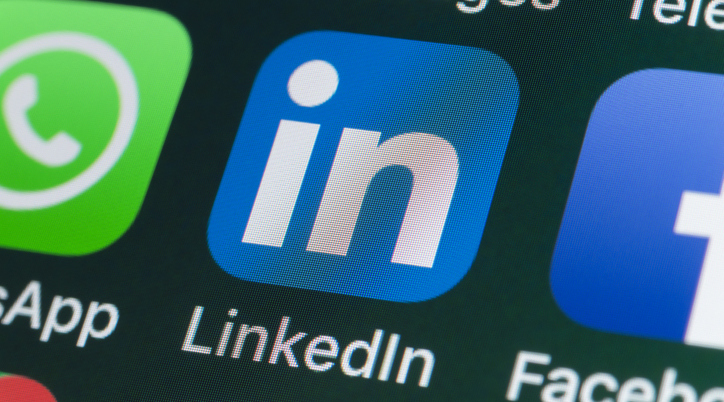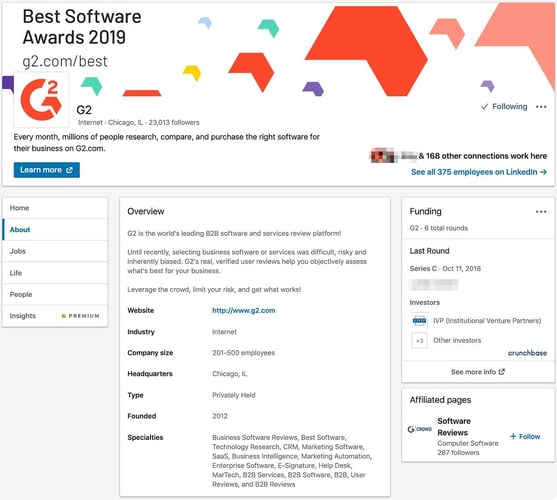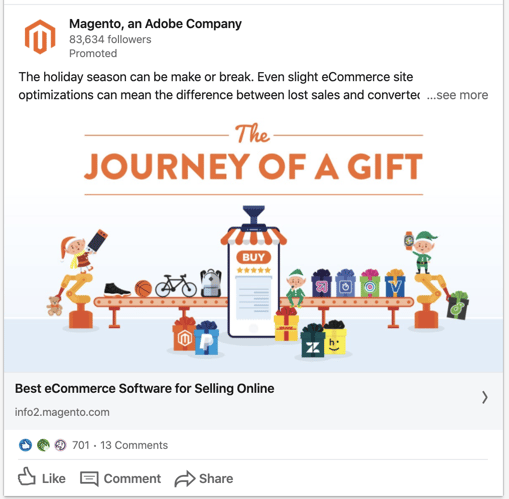
LinkedIn’s primary purpose is to connect business professionals all across the world.
The popular business website has created a name for itself when it comes to bringing industry leaders, business professionals, job posters, and job seekers together in one place.
As marketing and advertising continued to evolve throughout the early 2000s, businesses began implementing LinkedIn into their social media marketing strategies. Although it may not be considered as one of the most important places to market your business, creating and maintaining a presence on LinkedIn has proven useful to many businesses over the past decade.
In this article, we’ll take a look at some useful tips to keep in mind while developing a LinkedIn marketing strategy that delivers results.
Did you know that LinkedIn hosts more than 500 million professional profiles? With that amount of talent existing in one place, there are endless opportunities for connection and collaboration across teams, businesses, and even industries. When you visit LinkedIn, you’ll know that you’re in the right spot if you’re looking to nurture and grow your network.
Additionally, if your business is in the process of hiring new team members, consider using LinkedIn’s impressive job board to scout talent. Right alongside Indeed, CareerBuilder, Monster, and Glassdoor, LinkedIn has proven itself to be a great place for job seekers to find their next career move.
LinkedIn is more than just a place to host your resume or absentmindedly browse when you’re bored. It can help you to build your business’ image, expand your professional network, and advertise to an audience of people you may not find on Instagram, Twitter, or Facebook.
By now, you probably know the basics of LinkedIn for personal use. To market your business and its offerings, there are a few extra steps you need to learn in order to kick-start your efforts.
The foundation of a successful LinkedIn marketing strategy begins with a strong company profile. Think of your company’s profile as an extension of your online brand. This is the first page that prospective job candidates or buyers will land on when they search for your company, so it’s important to put your best foot forward. Start by making sure that your profile is up-to-date and accurate. From there, it’s going to require ongoing effort to update your page to make it more engaging. More on that later.
 Source: LinkedIn
Source: LinkedIn
Every good marketing strategy starts with a lot of research and planning. If you’re going to dedicate time and resources to marketing your business on LinkedIn, you need to define a clear objective to guide your efforts. By now, you likely already have a strong idea of who your target audience is. The next step is to determine how you want your audience to engage with your company’s LinkedIn presence.
Here are some possible objectives:
You could be targeting one or multiple of these objectives with your LinkedIn marketing strategy. The important part is knowing which ones are most important to your team and evaluating how they will fit into your bigger social media marketing efforts.
Taking steps to optimize your company page for SEO can help up your chances of showing up on LinkedIn search and in web search results. To start, conduct keyword research to see what people in your industry are actively searching for. Identify which keywords are most popular and aim to incorporate them into your company profile wherever they fit naturally. If you’re familiar with digital marketing, you probably know by that now search engines recognize pages with quality content. With this in mind, you should be regularly populating your LinkedIn page with fresh content to show search engines that your profile is active and up-to-date.
It’s likely that most of your competitors are already on LinkedIn. The goal is to find out how to differentiate your brand and communicate your unique value proposition to the same LinkedIn audience. Take a look at your competitor’s profiles and identify ways to make your page stand out. What kind of content are they sharing? Are they running any paid advertisements? How are they advertising their job openings? Always think one step ahead of your competitors, identify opportunities where their strategy is lackluster, and cater to your target market better than they do.
Content creation is essential to marketing effectively on LinkedIn. A business profile that is outdated and stale won’t be effective at grabbing a prospective buyer or job candidate’s attention. People engage with brands that are continuously generating new content that is valuable, educational, or entertaining. If your business serves a particular field, creating content is a great way to build on your expertise and establish your brand as an innovative thought leader in the industry.
The best part is that you don’t necessarily need to dedicate additional time and resources to creating new material. Simply take a look at the promotional channels you already use and add LinkedIn to that list. Relevant pieces of content include blog articles, webinars, research studies, and even videos or podcasts. The more up-to-date and engaging your company page is, the better your marketing results will be.
Your employees can be some of your biggest brand advocates. Encourage your internal teams to interact with your company page, share their favorite pieces of content, and mention your business in any original content that they create. This strategy can give your brand a major boost in terms of awareness and recognition since every employee is promoting your company across their unique individual network.
To take your marketing strategy to the next level, you may want to consider allocating budget for LinkedIn ads. The LinkedIn ad platform is designed to help you reach a specific objective, which you will identify before kicking off your campaign. Using LinkedIn Campaign Manager, you have extensive audience targeting options that allow you narrowly define the type of people you want to reach. You can define your audience based on job title, location, interests, field of study, or years of experience.
Additionally, LinkedIn offers a variety of ad types to choose from:
The type of ad you choose will be largely dependent on the objective you chose earlier. Each of these ad types are designed to reach different goals. Here's an example of sponsored content ad:
 Source: LinkedIn
Source: LinkedIn
If you have budget concerns, rest assured that the platform makes it easy to track all of your ad spend. Similar to other social media networks, LinkedIn charges you based on cost-per-click (CPC) and lets you track every aspect of the ad campaign’s performance. This way, you have visibility into how much you’re spending and whether or not your marketing dollars are leading to meaningful results. When used in tandem with your other LinkedIn marketing efforts, leveraging paid advertising on the platform can give your brand the extra boost it needs to stand out.
People are inundated with hundreds of advertisements and marketing messages on a daily basis. With the entire internet at their fingertips, buyers are more informed than ever before and can recognize a brand that’s lacking authenticity right away. Remember that your LinkedIn presence is a direct reflection of your business. Staying authentic to your company values should remain at the core of your marketing strategy. Take this opportunity to humanize your brand and connect with your audience in a more genuine way. This can be as simple as sharing content related to your company culture or replying directly to comments on your posts.
LinkedIn can be used in a variety of ways, so don’t write it off as just another social media platform. Whether you’re on the site to keep up with your colleagues or you manage your company’s business page, marketing on LinkedIn is multi-faceted and can be done by anyone.
Connecting is the goal, so get out there and use LinkedIn to bring users, businesses, and professionals together.
By now, you already know how valuable LinkedIn is for marketers. Discover how you can use LinkedIn to enable your sales team to connect with prospects and grow pipeline.
Alexa is a former content associate at G2. Born and raised in Chicago, she went to Columbia College Chicago and entered the world of all things event marketing and social media. In her free time, she likes being outside with her dog, creating playlists, and dabbling in Illustrator. (she/her/hers)
LinkedIn: A website full of business professionals, job-seekers, senior-level executives,...
 by Alexa Drake
by Alexa Drake
Imagine your latest LinkedIn post just hit 50,000 likes. The notifications are buzzing, and...
 by Tanushree Verma
by Tanushree Verma
Capturing and commanding customer attention when they’re constantly overloaded with content is...
 by Kamaljeet Kalsi
by Kamaljeet Kalsi
LinkedIn: A website full of business professionals, job-seekers, senior-level executives,...
 by Alexa Drake
by Alexa Drake
Imagine your latest LinkedIn post just hit 50,000 likes. The notifications are buzzing, and...
 by Tanushree Verma
by Tanushree Verma


